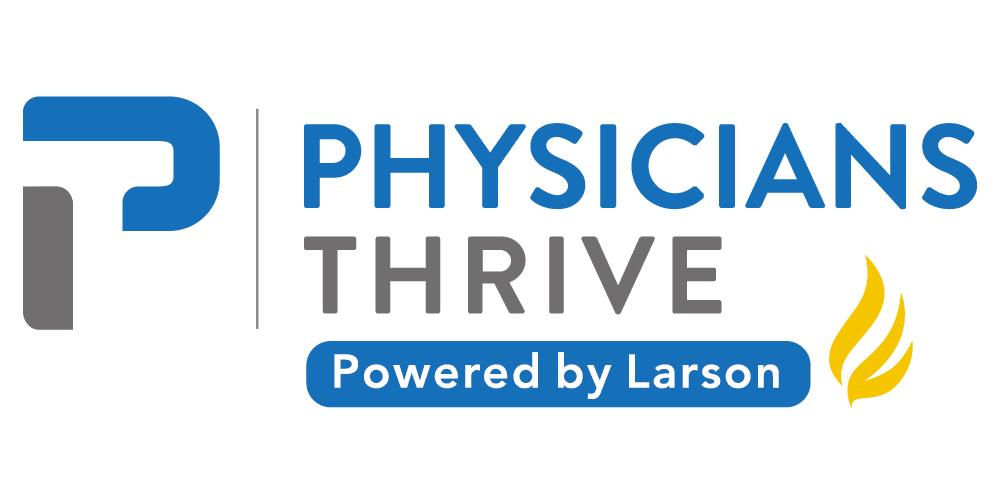Malpractice insurance, auto insurance, health insurance, business insurance, homeowner’s insurance: physicians are required by law to carry various insurance policies. Many other important insurance policies are completely optional.
And one of those optional insurance policies is disability insurance.
Yet as a physician, you shouldn’t think of disability insurance as an option at all. That’s because it’s one of the single best ways to protect your finances and protect your income.
But how much disability insurance do you actually need? When should you get it? Do you need it forever?
Today we’ll be answering the question that many physicians have: how much disability insurance do physicians need?
Table of Contents
What is Physician Disability Insurance?
Disability insurance is simply a safety net that protects your income. Should you become ill, injured, or disabled and cannot work, a disability insurance policy will give you a portion of your income through a monthly payout.
It’s a way to protect your future income and ensure that you still have a stream of revenue, even if you cannot work.
There are many types of disability insurance, like short-term coverage and long-term coverage. In many cases, physicians will have a short-term disability insurance policy through an employer group plan. And a long-term individual disability plan that affords them even more disability coverage and protection.
Disability Insurance for Doctors is a Must
Disability insurance is a must for physicians. As a high-income earner, you’re likely the breadwinner for your family. You need to protect your finances to pay the bills and maintain the lifestyle you’re accustomed to.
All high-income earners should have disability insurance to protect their families, assets, and future income.
The higher your annual income, the less you can rely on Social Security or SSDI (Social Security Disability Insurance) to cover your living expenses.
The monthly benefits offered through federal programs are minimal at best. For physicians who make a median income of $197,000 per year ($168,000-$229,000 depending on which state they work in), federal benefits programs will only supplement a minuscule fraction of your lost income.
See also: Does Your Advisor Have a Fiduciary Relationship to You?
Disability Insurance for Medical Residents: Protect Your Career Early On
Many physicians wonder when is the right time to start paying for disability insurance.
The answer is: as early in your career as you possibly can.
And while you may not earn much of a salary as a resident, the best option is to sign up for a disability policy while still in your medical residency. You can and should even consider it as an M4.
There are a variety of reasons why residents should seek a disability insurance policy.
Protect More of Your Future Income
Disability insurance protects your future income. And as a resident, you have a lot of future income to earn. Every day that goes by that you don’t have disability insurance is one more day that you’re risking. Both your career and all of your potential future earnings.
Lock in Cheaper Rates
Another reason to get disability insurance as a resident is that you’ll lock in cheaper rates when you’re younger and healthier. Disability insurance premiums, like life insurance premiums, vary based on several factors, including your current medical condition and age.
You’ll pay less in monthly premiums the younger and healthier you are.
Several disability insurance providers, such as The Standard, provide resident discounts to medical students, fellows, and physicians still in residency and training.
Add the Right Riders
All insurance providers allow you to add optional riders to your policy. If you seek a disability insurance policy as a resident, there are three critical riders that you need to add: the future increase option rider, the student loan reimbursement rider (if you have medical school debt) l, and the own occupation rider.
With the student loan rider, you can collect your monthly benefits and an additional amount to cover your monthly medical school loan payments.
With the future increase option rider (FIO), you give yourself the option to add more insurance coverage as you earn more and advance in your career. By having this rider in place, you can pay for less coverage now (while you’re making less) and increase your coverage amount over the years.
By adding the FIO rider when you initiate your policy, you won’t have to take another health exam. Should your health decline and you want to add additional coverage without the FIO rider, you’ll be subject to higher premiums and rates, based on your current health status.
The own occupation rider makes sure your exact duties are protected. Whatever your CPT Codes are, that will be considered your occupation and you will be able to receive full benefits and not have them reduced if you earn income from any other source. We will dive into this more later.
How Much Disability Insurance Do I Need?
Most insurance companies have a maximum benefit amount, and it’s usually about 60% of your annual income. So if your monthly income is $20,000, your insurance company will likely max out your monthly disability insurance benefits at about $12,000.
The higher the coverage, the more you’ll pay in monthly payments. But that higher amount of coverage also offers you a more significant amount of protection.
Here’s how to decide how much you need:
- Calculate your total monthly expenses, like mortgage or rent, insurance payments, loans, utilities, and all other costs along with how much you are saving for your financial goals.
- If your monthly payments exceed 60% of your income, you’ll want to take the maximum benefit allowed by your insurer.
- If your expenses are far less than 60% of your income, you may be able to get away with paying for a bit less coverage.
However, even if your expenses are only 30% of your income, it’s still best to take the maximum 60% income insurance benefit. Why? Because you can use that income for anything. Including making other investments that can net you even more income.
It’s also crucial that physicians don’t rely solely on a group policy offered through their employer. While these policies can help supplement lost income and earn even more benefits, they alone are not enough.
Should you have both a short-term group policy and an individual policy, you can first tap into your short-term benefits. Then start collecting benefits from your individual long term disability insurance plan.
How to Save the Most Money with Disability Insurance for Doctors
Having disability insurance will increase your overall monthly expenses because you’ll need to pay monthly payments. But the cost of that plan is well worth the benefit it provides.
There are a lot of factors that contribute to the cost of your monthly payment. For physicians still paying off medical school debt and trying to keep their expenses low, there are ways to lower the cost of disability insurance.
Elimination Period
Every policy has an elimination period. This is the waiting period between the date of your disability and the day that you’re eligible to start collecting disability insurance benefits.
Most insurers allow you to choose from elimination periods that range between 30 and 720 days. You’ll pay more the shorter the elimination period. The longer the elimination period, the less your payment will be.
Benefit Period
The benefit period is the length of time that you’re eligible to receive benefits and income protection. The extent of coverage also factors into the cost of your monthly payments.
When you sign up for a policy, you can select benefit periods of two years to retirement age. The shorter the benefit period, the less you’ll pay monthly. However, if you suffer a lifelong disability early on in your career, a two-year benefit period will only cover your income for two years.
Coverage Amount
The amount of coverage you seek will significantly affect your monthly rates. Your premiums will be higher with more coverage. Keep in mind, no matter how low you want your monthly payments to be, you must have enough coverage to pay your living expenses.
You can protect yourself and give yourself the option to increase future coverage with the FIO rider or future increase benefit rider. Putting this rider in place early on will add to your monthly cost. It also offers the option to add coverage as your salary increases over the years.
Age and Occupation
The cost of disability insurance alone certainly won’t be enough to make you change your occupation. Still, you can keep your costs to a minimum by selecting a policy at a younger age.
As mentioned, you’ll pay less each month the younger and healthier you are.
Related: 3 Topics Physicians Should Avoid in Interviews
How Physician Disability Insurance Can Help You Build Wealth
The main point of having disability insurance is to protect your income if you are too injured or ill to work. But disability insurance does more than just that. With the right policy in place and the right strategy for managing it, disability insurance can actually help you build wealth.
Become Financially Independent
Like life insurance, disability insurance is a financial and tax-planning tool that can help you acquire more wealth over time.
Here’s why physician disability insurance is an integral part of your lifelong financial plan:
Every disability insurance policy comes with a definition of disability, and you must meet the standard of that definition to collect benefits. There are various definitions. However, there’s only one that physicians should choose, and that is the definition of “own occupation.”
With an own occupation definition, you will be eligible to collect benefits as long as your injury prevents you from doing even a part of your current job in your current specialty. Under this definition, you can still collect benefits based on your loss of income from your current job. Even if you decide to work another job in another field.
As long as you have this definition in your policy, you can collect a portion of your pre-disability income and earn brand new income from another job. Depending on your disability, you could end up making even more post-disability than pre-disability.
You can also add BOE insurance to earn more potential income. Even when you’re out of work.
Business Overhead Expense (BOE) Insurance is a way to protect your business. Should you become disabled, this type of policy (which can also be added as an optional rider) will cover many of your business operating expenses. So, if you’re a partner in a practice, your practice can continue.
Your BOE benefits will cover your portion of the expenses. You can still earn profits coming into the business while you’re not there.
Self-Insure Later in Life
The whole point of disability insurance is to guarantee that you’ll be able to pay your bills, cover your expenses and save for retirement even if you can’t earn income. But you won’t need an income insurance policy if your finances include a robust savings plan and a self-insurance reserve fund.
By protecting your future income early on in your career, you’ll be better able to make investments and build up enough wealth to cover a loss of income, should a disability occur.
For physicians who wish to carry disability insurance throughout their careers, that personal wealth you’ve built up allows you to reduce your monthly payments by opting for a shorter benefit period or a longer waiting period.
Choosing a policy early in your career also will cost you less throughout your life, regardless of how long you keep your policy.
You’ll pay less if you begin a policy when you’re young and healthy. This can also save you lots of money throughout your career. As you advance in age and earn more money, you can save more money to cover your expenses if you become disabled once your benefit period ends.
Earn Tax-Free Income
If you pay for your disability insurance with after-tax dollars, you will not have to pay income taxes on your benefits. This can greatly reduce your annual tax bill. Especially if you earn other income while collecting disability benefits.
Similar: 5 Ways for Doctors to Save on Taxes
Conclusion
Disability insurance is financial protection. It’s financial security. It’s also a way to build and increase wealth over time.
The thought of having to pay yet another monthly insurance bill may sound like a burden. Still, without it, you leave yourself in a vulnerable position with the possibility of earning no income.
Whether you’re a resident or a practicing physician who hasn’t yet sought out a disability insurance provider, now is your chance.
For more guidance on how to select the best insurer for your needs, contact Physicians Thrive now.
Get Your Free Disability Insurance Quote! It’s easy!
Subscribe to our email newsletter for expert tips about finances, insurance, employment contracts, and more!











































